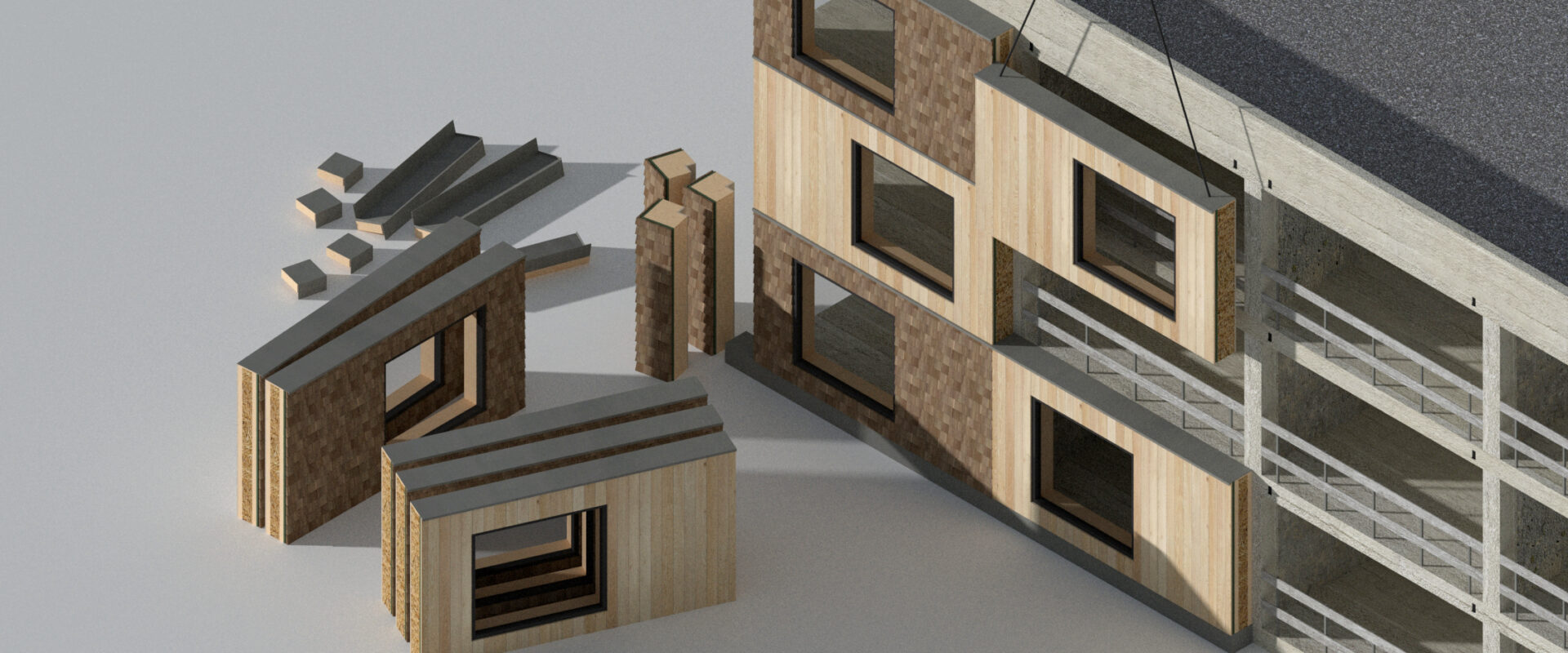Problem
The way we construct our buildings today is not sustainable. In many ways, the construction today is similar to the way houses were built a century ago – on the site, open to rain and wind, polluting the neighborhood with dust and noise. Construction processes waste material, human and energy resources. The sector produces about 40% of all greenhouse gas (GHG) emissions and it is by far the biggest user of raw materials, with less than a third of materials recovered at the end of buildings life cycle.
Yet, reusing building components or recycling building materials is not a widely spread practice. Construction materials are largely single use virgin materials. It is a common practice to send large quantities of the materials to landfill after the demolition of the building. The way contemporary buildings are constructed does not allow separation of materials by type later on. Refurbishment of buildings is often an impossible task, as buildings are not really designed for adaptation and change.
The construction industry is very slow to turn green. Major stakeholders do not invest enough into game changing innovation. Construction is one of the least digitized industries in the world with proprietary technologies clearly dominating over open source solutions.
Experiment solution
By 2027, all new public sector buildings in Estonia need to be 0-emission buildings, and by 2030 in the private sector. We need to prepare now to be ready for the new requirements and environmentally friendly solutions in the construction.
369 Pattern Buildings is an open source technology platform for modular low-impact buildings designed for reuse and adaptation. The main objective is to diminish the environmental footprint of construction by creating a demand and supply based market for green construction, and deliver it at industrial scale.
Pattern buildings are:
- mass-customized;
- produced off-site;
- made largely of biogenic materials.
In the near future, pattern buildings will be designed in just hours and constructed in weeks. Already today, the technology can significantly shorten the design and construction time, yet reduce the carbon footprint by 3 times.

Impact
During our time in Accelerate Estonia, we conducted a study and a pilot project based on the assumption that 75% of new buildings can be constructed with a kit of modular building components made of mainly biogenic materials.
In our experiment, we used the 369 Pattern Buildings platform to design kindergartens and office buildings. We benchmarked these modular designs against designs prevailing today, comparing the use of different biogenic materials and analyzing the carbon footprint. The comparison showed important results and significant, 3 times less the carbon footprint for pattern buildings.
We have already started our first projects with Tallinn city for an architectural competition, to build the first modular kindergarten by the year 2023. Elektrilevi (the national grid in Estonia) has also become a public sector pioneer investing into the development of the open source Pattern Buildings platform. On their request, the team of architects, engineers and modular construction specialists have developed an open source component library for designing and constructing modular classrooms, workshops and small office buildings. The new building for Elektrilevi is currently tendered for construction, and scheduled for production early 2023.

Future plans
Our ambition is to make a revolution in the construction sector, starting from Estonia.
The next quest for the team is to develop technologies and prototype new patterns first, rebuilding Ukraine and then helping the country to become a production hub supplying green buildings for Europe, once the wretched war is won.

Renee Puusepp
EXPERIMENT LEADER


